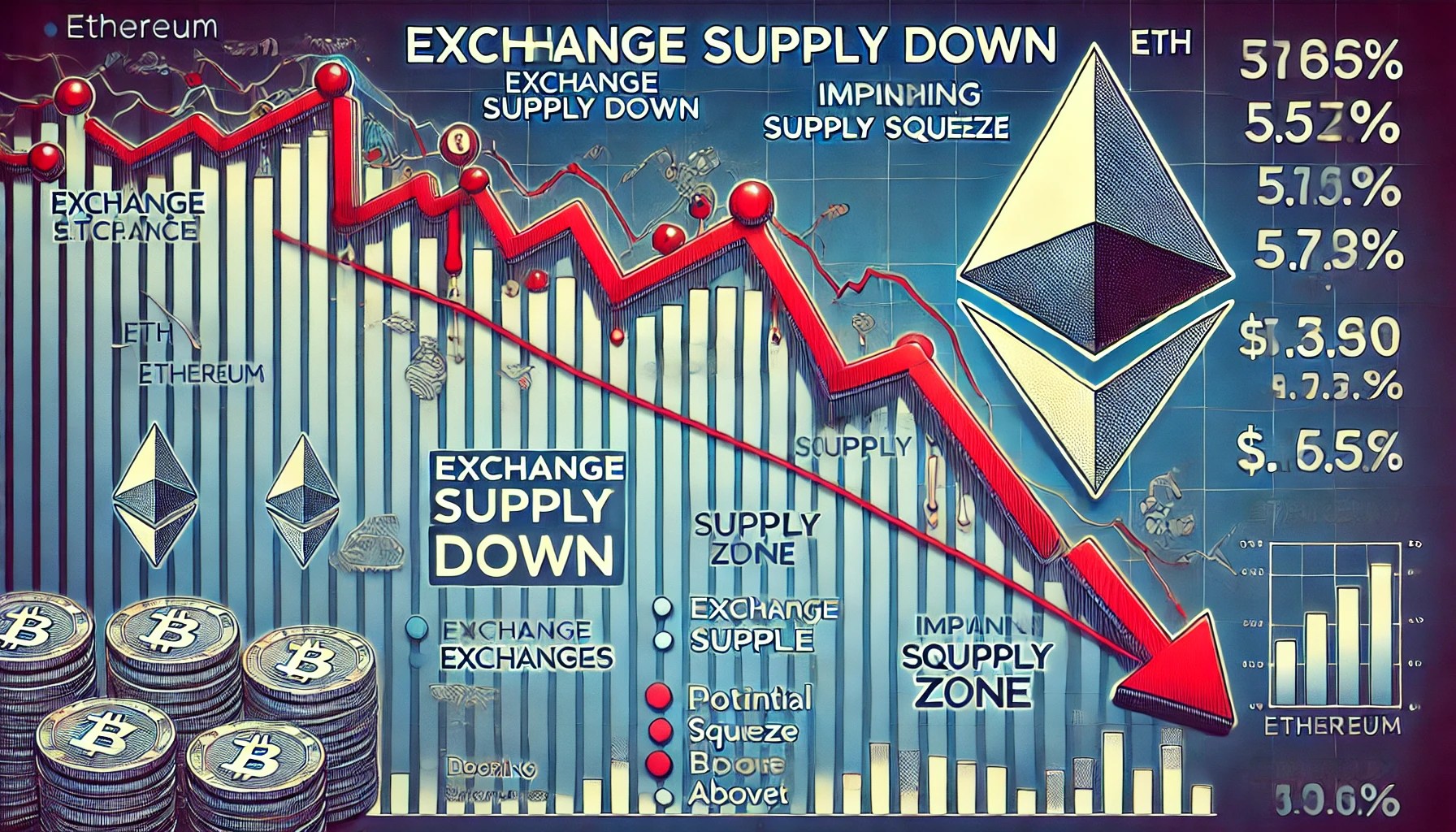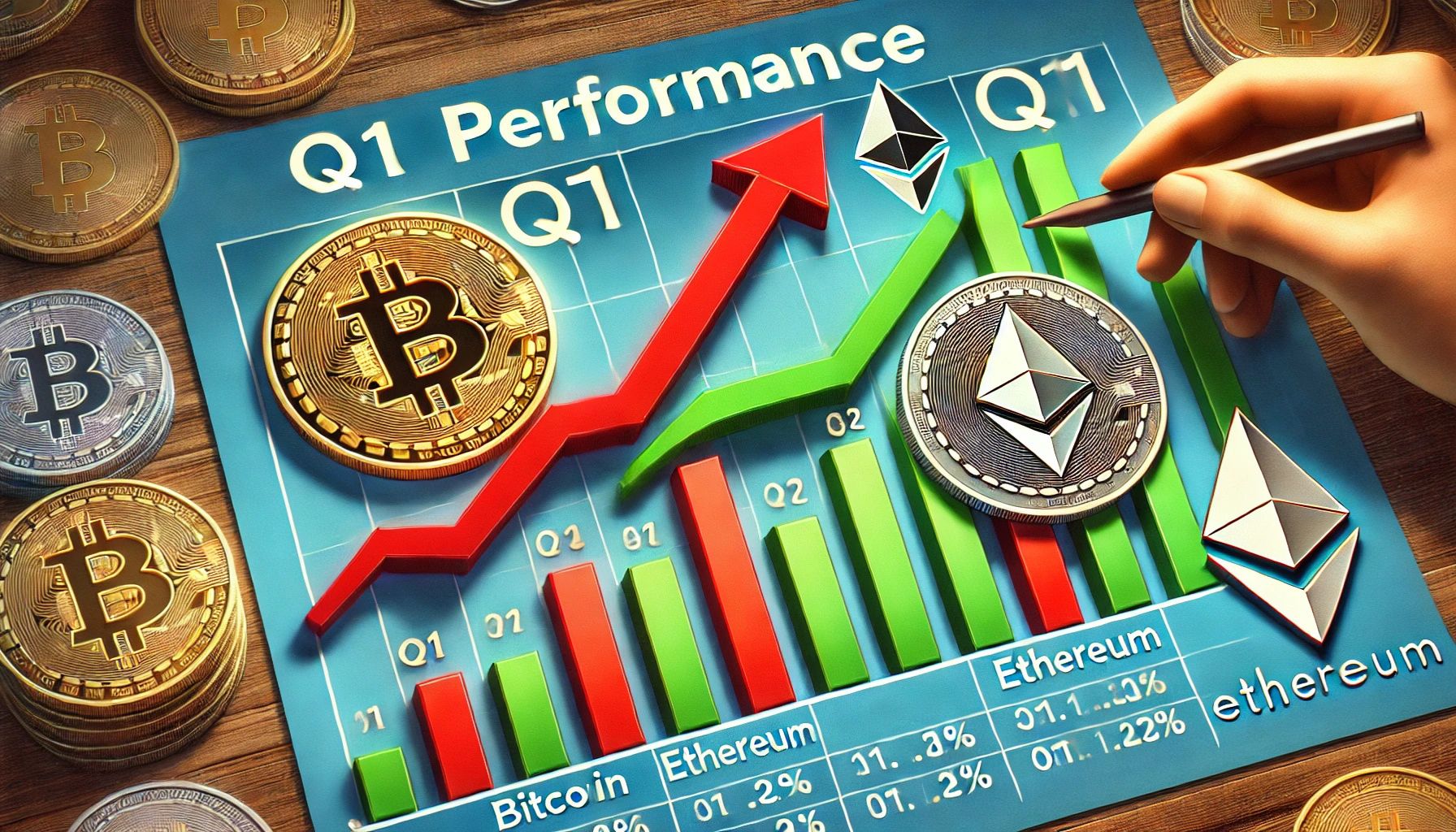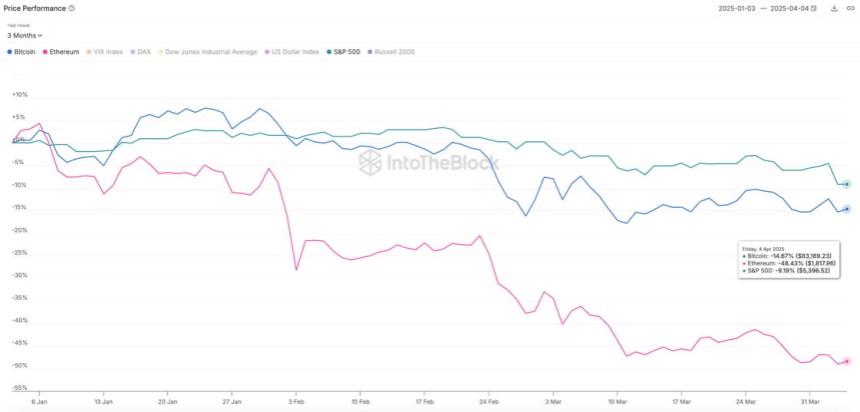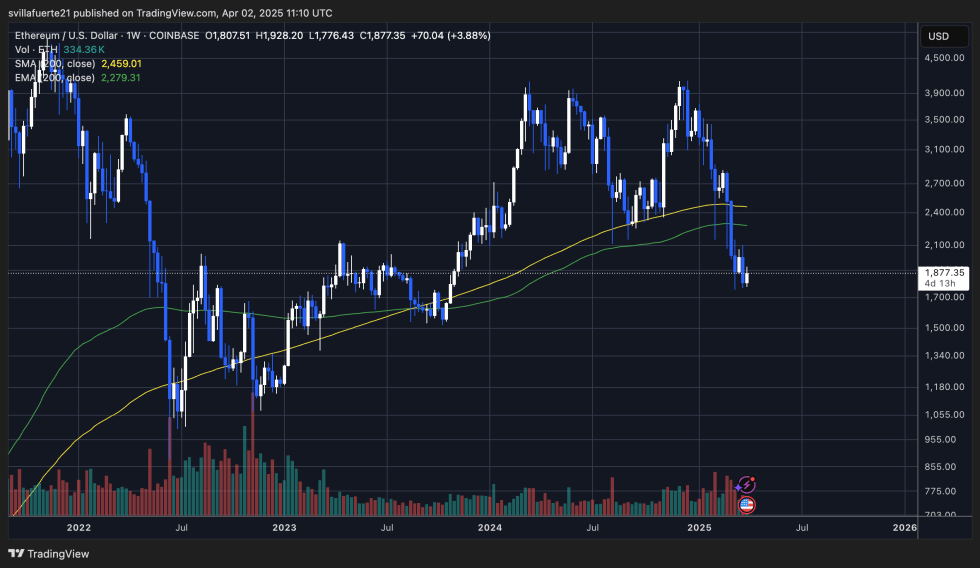Ethereum
Ethereum Targets 100,000 TPS With Buterin’s ‘The Surge’ Plan

In a new blog post titled “Possible futures for the Ethereum protocol, part 2: The Surge,” Ethereum co-founder Vitalik Buterin outlined an ambitious roadmap aiming to scale Ethereum’s transaction processing capacity to over 100,000 transactions per second (TPS) across Layer 1 (L1) and Layer 2 (L2) solutions. This initiative, known as “The Surge,” seeks to enhance scalability while preserving decentralization and security.
Buterin began by reflecting on Ethereum’s initial scaling strategies, which involved sharding and Layer 2 protocols like state channels and Plasma. At the beginning, Ethereum had two scaling strategies in its roadmap, he wrote, pointing to a 2015 paper that discussed sharding—a method where each node only needs to verify and store a fraction of the transactions. This approach mirrors how peer-to-peer networks like BitTorrent operate.
Simultaneously, Layer 2 protocols were developed to offload computation and data from the main chain while leveraging Ethereum’s security. Rollups emerged in 2019 as a powerful Layer 2 solution, requiring significant on-chain data bandwidth. “Fortunately, by 2019 sharding research had solved the problem of verifying ‘data availability’ at scale. As a result, the two paths converged, and we got the rollup-centric roadmap which continues to be Ethereum’s scaling strategy today,” Buterin explained.
Ethereum Roadmap: The Surge
The Surge aims to achieve several key goals: reaching 100,000+ TPS on L1 and L2, preserving the decentralization and robustness of L1, ensuring that at least some L2s fully inherit Ethereum’s core properties of trustlessness, openness, and censorship resistance, and maximizing interoperability between L2s to make Ethereum feel like a unified ecosystem.

One of the primary techniques to achieve these goals is Data Availability Sampling (DAS). Currently, Ethereum’s L1 data bandwidth is limited, capping rollup TPS at approximately 174. To break this barrier, Ethereum plans to implement PeerDAS, a form of one-dimensional sampling that allows nodes to verify data availability efficiently.
“Our medium-term target is 16 MB per slot, which if combined with improvements in rollup data compression would give us ~58,000 TPS,” Buterin noted. Further into the future, two-dimensional sampling could be adopted to enhance efficiency, albeit with increased complexity. “We need much more work figuring out the ideal version of 2D DAS and proving its safety properties,” he added.
Data compression techniques are also crucial in reducing the data footprint of transactions. These include signature aggregation using BLS signatures, replacing addresses with pointers to historical data, and custom serialization for transaction values. “We can thus represent most currency values very compactly with a custom decimal floating point format, or even a dictionary of especially common values,” Buterin suggested.
Generalized Plasma is another significant component of The Surge. Plasma allows for off-chain transactions with on-chain security assurances. By incorporating SNARKs (Succinct Non-interactive Arguments of Knowledge), Plasma becomes more powerful and generalizable. “Even if you can only protect a subset of assets […] you’ve already greatly improved on the status quo of ultra-scalable EVM, which is a validium,” he stated.
Buterin also emphasized the need to mature L2 proof systems. Most rollups today are not fully trustless, relying on security councils that can override proof systems. He stressed the importance of reaching “Stage 2” rollups, which are fully trustless and secure. This involves formal verification, using mathematical techniques to prove that proof systems align with the EVM specification.
“We can make a formally verified SNARK prover of a minimal VM,” he explained. Additionally, deploying multiple proof systems, or “multi-provers,” ensures redundancy and security. “If the proof systems agree, the security council has no power,” Buterin highlighted.
Enhancing cross-L2 interoperability is also a key focus. One major challenge is making the L2 ecosystem seamless for users. Buterin proposed several improvements, such as chain-specific addresses that include the chain identifier to simplify cross-L2 transactions, standardized payment requests for easy and secure requests for payments across different chains, and developing protocols like ERC-7683 and RIP-7755 for efficient asset exchanges and gas payments.
Buterin also advocated for light clients and keystore wallets to allow users to verify chains without relying on RPC providers and to simplify key management across chains. “Our ability to handle this problem successfully is a test of our ability to stick together as a community,” Buterin asserted.
While L2 scaling is vital, enhancing L1 remains crucial for Ethereum’s security and economic viability. Buterin discussed strategies like increasing the gas limit, making specific operations cheaper through proposals like EOF (EVM Object Format), and exploring native rollups. “A big question that any L1 scaling roadmap needs to answer is: what is the ultimate vision for what belongs on L1 and what belongs on L2?” he posed, emphasizing the need for balance to maintain Ethereum’s core strengths.
Buterin concluded, “Now our task is to bring the rollup-centric roadmap to completion, and solve these problems, while preserving the robustness and decentralization that makes the Ethereum L1 special.”
At press time, ETH traded at $2,625.

Featured image created with DALL.E, chart from TradingView.com
Ethereum
Ethereum Supply On Exchanges Plummets – Is A Supply Squeeze Coming?


Ethereum is down 55% from its December high, reflecting the broader weakness that has hit the crypto market amid escalating global uncertainty. Much of the recent pressure comes from US President Donald Trump’s aggressive tariff policies and unpredictable economic stance, which have rattled investor confidence and driven a risk-off sentiment across financial markets. High-volatility assets like Ethereum have been particularly hard hit, with bulls struggling to hold critical support levels and sellers continuing to dominate short-term price action.
Despite the bearish outlook, on-chain data provides a glimmer of hope for Ethereum’s long-term prospects. According to CryptoQuant, Ethereum exchange reserves have been steadily declining since 2022 — a trend that suggests a continued reduction in available supply on centralized platforms. While this hasn’t translated into upward price action yet, it points to a potential supply squeeze once demand returns.
For now, ETH remains under pressure with no immediate signs of a reversal, but the shrinking exchange supply could set the stage for a strong rally if buying interest picks up. Until then, Ethereum continues to trade in a fragile state, with investors closely watching for signs of support or further breakdown in the coming weeks.
Ethereum Tests Critical Support As Exchange Supply Drops
Ethereum is testing critical demand levels as the market continues to lean bearish. After weeks of persistent selling pressure, ETH is now trading below the $1,800 level — a zone that many analysts view as a last line of defense before deeper losses. The broader macroeconomic backdrop remains challenging, with trade war fears and tightening financial conditions keeping risk assets under pressure.
Ethereum has been particularly weak since late February, when bulls lost control following the breakdown below $2,500. Since then, price action has steadily declined, and hopes for a bullish cycle have faded. Investor sentiment is fragile, and bulls have yet to show enough strength to reclaim broken support levels or initiate a meaningful recovery.
However, there are signs of long-term potential building beneath the surface. According to top analyst Quinten Francois, ETH supply on exchanges is plummeting. Shared via X, CryptoQuant data shows a significant downtrend in Ethereum held on centralized platforms — a signal that investors may be moving assets into cold storage, reducing sell-side pressure.

This ongoing decline in exchange supply historically precedes bullish breakouts. Once demand returns and price consolidates, the thin supply on exchanges could act as fuel for a sharp rally. While current conditions remain bearish, the structural reduction in available ETH offers a compelling setup for a future rebound.
For now, Ethereum must hold above the $1,750–$1,800 range to prevent a deeper slide, but long-term holders are watching closely for the moment when reduced supply meets renewed buying pressure.
ETH Trades Below Key Weekly Indicators
Ethereum is currently trading below both the weekly 200-day moving average (MA) around $2,500 and the exponential moving average (EMA) near $2,250 — key long-term indicators that now act as overhead resistance. This breakdown highlights the severity of the ongoing correction, with bulls under heavy pressure to prevent further losses. ETH is now flirting with its lowest weekly close since October 2023, adding to concerns that the downtrend could deepen if buyers fail to step in soon.

Momentum remains weak, and bullish attempts to recover have been short-lived, as macroeconomic instability and continued selling pressure weigh on the broader crypto market. For Ethereum to avoid further downside, it must hold the $1,800 level — a key demand zone and psychological threshold.
If bulls manage to defend this level and reclaim the $2,000 mark in the coming days, it could signal the beginning of a recovery rally. Reentering this range would shift sentiment and possibly trigger renewed buying interest. Until then, ETH remains vulnerable, and a close below $1,800 could open the door to a retest of lower support levels, potentially accelerating the decline if sentiment worsens further.
Featured image from Dall-E, chart from TradingView

Editorial Process for bitcoinist is centered on delivering thoroughly researched, accurate, and unbiased content. We uphold strict sourcing standards, and each page undergoes diligent review by our team of top technology experts and seasoned editors. This process ensures the integrity, relevance, and value of our content for our readers.
Ethereum
Ethereum Lags Behind Bitcoin In Q1 Performance Amid Market Downturn – Details

Reason to trust

Strict editorial policy that focuses on accuracy, relevance, and impartiality
Created by industry experts and meticulously reviewed
The highest standards in reporting and publishing
Strict editorial policy that focuses on accuracy, relevance, and impartiality
Morbi pretium leo et nisl aliquam mollis. Quisque arcu lorem, ultricies quis pellentesque nec, ullamcorper eu odio.
Ethereum continues to disappoint investors as its decline deepens, sparking growing fears of further selling pressure across the market. The second-largest cryptocurrency by market cap has failed to hold key support levels, and analysts are increasingly warning of a potential drop below multi-year lows near $1,750. With no clear consensus on where the next reliable support might lie, sentiment remains shaky and uncertain.
Related Reading
The broader crypto landscape has faced heavy volatility, but Ethereum’s underperformance stands out. According to IntoTheBlock, ETH significantly lagged behind Bitcoin in the past quarter. This disparity has raised concerns about Ethereum’s short-term strength and resilience, especially as it continues to struggle below the $1,900 level.
As macroeconomic instability, regulatory uncertainty, and risk-off sentiment continue to pressure financial markets, Ethereum’s path forward looks increasingly fragile. Without a strong rebound or renewed demand, the current trend suggests a prolonged period of weakness. Until bulls regain control and key resistance levels are reclaimed, the outlook for ETH remains cautious, with investors watching closely for any signs of a potential bottom — or further breakdown.
Ethereum Holds Ground As Tariff Shock, Underperformance Fuel Market Anxiety
Ethereum is trading at critical levels following weeks of mounting selling pressure and fading bullish momentum. The broader crypto market has been hit hard by escalating macroeconomic uncertainty, largely driven by US President Donald Trump’s recent policy shifts and sweeping tariffs. These moves have rattled investor confidence, sending shockwaves through both traditional and digital markets.
Among major assets, Ethereum has been one of the most affected. Bulls lost control in late February when ETH broke below the $2,500 level, triggering a steady downtrend that has continued to weigh on price action. Attempts to regain support have consistently failed, and ETH now trades near multi-month lows with no clear bottom in sight.
According to data from IntoTheBlock, Ethereum underperformed significantly this past quarter — losing nearly 50% of its value- while Bitcoin dropped just 15% in the same period. This widening performance gap has become a point of concern for investors who once expected ETH to lead a 2025 rally fueled by Ethereum-based developments and broader adoption.

Now, all eyes are on the coming weeks. If bulls can reclaim key levels and reignite momentum, Ethereum may still have a shot at recovery. But if a bearish sentiment continues to dominate, a deeper correction — potentially below the $1,750 mark — could be next. The pressure is on, and Ethereum’s next move could set the tone for the rest of the altcoin market.
Related Reading
Price Action Details: Key Levels To Watch
Ethereum is currently trading below the $1,800 mark, showing continued weakness as bulls struggle to regain momentum. The price remains firmly below the 4-hour 200 MA and EMA, both of which are clustered around the $2,000 level — a critical technical zone that previously acted as strong support. Now turned resistance, this area must be reclaimed for any hope of a sustained recovery.

To shift the trend, bulls need to push ETH above $2,000 and ideally reclaim the $2,200 level, which would mark a break from the recent downtrend and signal the start of a potential recovery phase. Without that move, however, price action continues to favor sellers.
The $1,800 level is now the last line of defense. Failing to hold and reclaim it quickly could open the door to a much steeper decline. If bears continue to pressure price below this zone, Ethereum may revisit levels not seen since early 2023 — with $1,750 and even $1,550 as potential downside targets.
Related Reading
Momentum remains against ETH, and unless bulls step in decisively, the trend looks set to continue lower. The next few days will be critical in determining whether Ethereum stabilizes or breaks further down.
Featured image from Dall-E, chart from TradingView
Ethereum
Ethereum Whale Activity Fades Since Late February – Details


Ethereum is trading below the $1,900 level after weeks of persistent selling pressure, and signs suggest that the downside momentum could continue. Bulls lost control back in late February when ETH failed to hold the $2,500 mark — a key level that many viewed as critical for sustaining a bullish outlook. Since then, Ethereum has continued to underperform, disappointing investors who had anticipated a strong 2025 rally fueled by growing institutional interest and market optimism.
Instead, macroeconomic uncertainty, global tensions, and weakening market sentiment have weighed heavily on high-risk assets like Ethereum. Price action has remained underwhelming, with failed attempts to reclaim key resistance levels adding to bearish sentiment.
Adding to these concerns, crypto analyst Ali Martinez shared insights showing a significant decline in on-chain activity. Since late February, the number of large Ethereum transactions — typically involving whales and institutional players — has dropped significantly. This decline suggests that major market participants may be stepping back, reducing their exposure as uncertainty lingers.
Ethereum Under Pressure As Macroeconomic Fears Grow
Ethereum continues to struggle under mounting pressure as macroeconomic uncertainty and global instability ripple through financial markets. Among the most affected are high-risk, volatile assets like Ethereum, which have seen significant outflows in recent weeks. The broader market sentiment remains fragile, largely driven by US President Donald Trump’s unpredictable policy decisions and tariff threats. His administration’s economic stance has injected fresh uncertainty into global markets, pushing investors toward safer assets and away from speculative plays like ETH.
Bulls are finding it increasingly difficult to defend key support levels. After failing to hold above $2,500 in late February, Ethereum has slipped steadily lower, now trading below $1,900 — a level that once served as a critical psychological threshold. With little sign of renewed buying pressure, the risk of a continued selloff looms large.
Ali Martinez shared alarming on-chain data showing that since February 25, the number of large Ethereum transactions has dropped by 63.8%. This decline in whale activity signals that major holders may be exiting or sitting on the sidelines, reducing overall market confidence and liquidity.

As long as macroeconomic pressures persist and whales remain inactive, Ethereum is likely to remain vulnerable. Bulls must step in to stabilize price action, or risk watching ETH fall further into lower support zones. For now, the outlook remains cautious, with continued weakness likely unless sentiment shifts or broader economic clarity emerges.
ETH Trades Below $1,900 As Bulls Defend Key Support
Ethereum is currently trading around $1,880, attempting to hold above a critical support zone near $1,750 — widely seen as the last line of defense for bulls. After weeks of sustained selling pressure, ETH remains in a vulnerable position, struggling to recover lost ground. The price is now well below the weekly 200-day moving average (MA) and exponential moving average (EMA), both sitting near the $2,500 level, which highlights the broader weakness in Ethereum’s market structure.

As long as ETH remains below these long-term trend indicators, the overall outlook stays bearish. Bulls must step in with conviction to prevent a deeper breakdown and shift momentum back in their favor. The most immediate priority is maintaining support above $1,800, which serves as a psychological and technical level of strength.
To confirm a recovery, Ethereum must also push back above the $2,000 mark in the near term. A break above this level would help restore investor confidence and could open the door for a move toward reclaiming the 200-week averages. Until then, Ethereum remains in a precarious position, and failure to defend current levels could trigger a deeper correction in the sessions ahead.
Featured image from Dall-E, chart from TradingView

Editorial Process for bitcoinist is centered on delivering thoroughly researched, accurate, and unbiased content. We uphold strict sourcing standards, and each page undergoes diligent review by our team of top technology experts and seasoned editors. This process ensures the integrity, relevance, and value of our content for our readers.
-

 Altcoin18 hours ago
Altcoin18 hours agoExpert Reveals Decentralized Strategy To Stabilize Pi Network Price
-

 Market24 hours ago
Market24 hours agoConor McGregor’s Crypto Token REAL Tanks After Launch
-

 Bitcoin20 hours ago
Bitcoin20 hours agoUS Macro Setup To Favour New Bitcoin ATH In The Long Run
-

 Ethereum19 hours ago
Ethereum19 hours agoEthereum Lags Behind Bitcoin In Q1 Performance Amid Market Downturn – Details
-

 Market17 hours ago
Market17 hours agoBitcoin Price Drops Below $80,000 Amid Heavy Weekend Selloff
-

 Market23 hours ago
Market23 hours agoCelestia (TIA) Price’s 30% Crash Prolonging Could Bring Recovery
-

 Market22 hours ago
Market22 hours agoRipple Highlights UK’s Potential to Become Global Crypto Hub
-

 Market21 hours ago
Market21 hours agoKey Solana Holders’ 6-Month High Accumulation Signal Price Rise






















